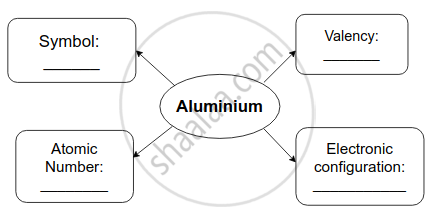Advertisements
Advertisements
Question
2 mL each of concentrated HCl, HNO3 and a mixture of concentrated HCl and concentrated HNO3 in the ratio of 3 : 1 were taken in test tubes labelled as A, B and C. A small piece of metal was put in each test tube. No change occurred in test tubes A and B but the metal got dissolved in test tube C respectively. The metal could be
Options
Al
Au
Cu
Pt
Solution
Au
Explanation -
A mixture of concentrated HCl and concentrated HNO3 in the 3 : 1 molar ratio is called aqua regia. It is a yellow-orange fuming liquid that can dissolve gold.
APPEARS IN
RELATED QUESTIONS
Which metal is extracted from calamine ore?
Give reasons, why aluminum is used in:
painting electric and telegraphic poles
Name the following:
The process of heating a substance very strongly in such a way that it does not combine with oxygen.
What is meant by refining of metals? Name the three common methods used for refining.
How many valence electrons are present in non- metals?
X is an element in the form of a powder. X burns in oxygen and the product is soluble in water. The solution is tested with litmus. Write down only the word which will correctly complete each of the following sentences:
(a) If X is a metal, then the litmus will turn ______.
(b) If X is a non-metal, then the litmus will turn ______.
(c) If X is a reactive metal, then ______ will be evolved, when X reacts with dilute sulphuric acid.
(d) If X is a non -metal, it will form _ oxide, which will form ______ solution with water.
(e) If X is a non -metal, it will not conduct electricity unless it is carbon in the form of ______.
Observe the given figure of reactivity series of metals and answer the following questions:

Reactivity series of metals
- Name two metals which react with water.
- Name two moderately reactive metals.
- Name the most highly reactive metal and the most less reactive metal.
In electrolytic reduction of alumina _______ is used as a cathode.
Complete flow chart given below.

The highly reactive metals like Sodium, Potassium, Magnesium, etc. are extracted by the ____________.
